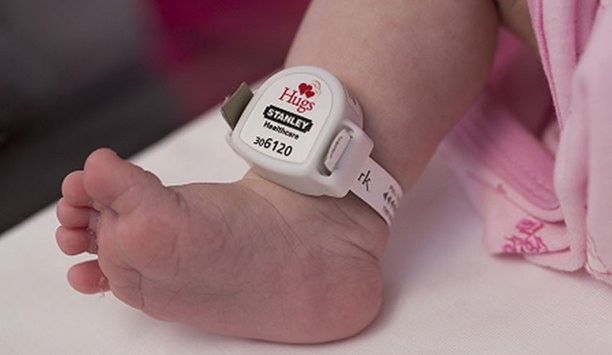Deborah O'Mara

Deborah O'Mara
Owner, DLO CommunicationsDeborah O’Mara is the owner of DLO Communications, a content creation and development firm focusing on print, digital and social media for the security industry, and contributing editor of SecurityInformed.com. Deborah is a veteran of the security marketplace, having extensive experience in security, fire alarm technology and integrated systems. Deborah is also long-time member of the Security Industry Association's New Product Showcase, as well as on the SIA NPS Marketing Committee. Deborah develops articles about trends, best practices and personalities from the dealer/integrator perspective.
Security, burglar and fire alarms, IP technology, integrated systems, convergence, cloud computing, the dealer and installer marketplace, residential systems, vertical markets
Round table contributions
Distributors have traditionally played an important role in the physical security market, ensuring ready availability of products that systems integrators need to complete their projects. But a changi...
Our society is engulfed in social media, from Facebook to Twitter to YouTube and all the rest. Among other benefits, social media provides an immediate and accessible form of communication. They say t...
As more security equipment categories become commoditized, a previously rich source of income for integrators and installers – markup – is becoming harder to come by. Less expensive produc...
Women in Security will be a focus at this year's ISC West in Las Vegas, including targeted conference sessions and the Women in Security Forum Breakfast on Friday, April 12. As a preview of the upcomi...
The industry is counting down to the big industry trade show this fall, the ASIS International 61st Annual Seminar and Exhibits — ASIS 2015 in Anaheim, Calif. What topics will dominate the tradi...
As we unpack our bags – literally and figuratively - from the recent ISC West in Las Vegas, it seems an appropriate time to reflect on the busy show. Specifically, it’s a good time to cons...
Articles by Deborah O'Mara
The Hugs Infant Protection Solution tracks the location of babies and provides protection anywhere the infant may be transported Wireless tracking and radio frequency identification...
We can now leverage technology to monitor activity across the public domain, searching Google, Facebook, and Twitter, for example, for specific keywords For more than a decade, Veri...
A perceived benefit of buying direct is to save money as opposed to paying a middleman Security companies have multiple options to purchase security products today – online, m...
Dennis Sage Home Entertainment, Phoenix, is a best-in-breed audiovisual contracting services firm that gradually began expanding its offerings to security several years ago. After testing the waters,...
What factors should an end user consider when looking for a professional systems solution provider? Andrew Schonzeit, President of IDESCO Corp., New York, knows what it takes to hav...
The rate of adoption of mobile credentials will progress quickly, because of its exciting value proposition Cloud computing has been around for some time now, starting with the form...
Angela White was sworn in as President-elect of ESA at the ESX show in June and will take office July 1 The Electronic Security Association (ESA) wrapped up its annual ESX conferenc...
IPVideo Corporation, Bay Shore, New York, recently announced a new OEM agreement with Milestone Systems Inc., Beaverton, Oregon, in an effort to provide deeper and wider options in its portfolio of vi...
With innovation continuing in HD CCTV, analog video surveillancemay be around for some time What’s your stance on the analog-to-IP video migration? When will it happen? Will a...
Joining Pelco in late 2015, Sharad Shekhar is responsible for the entire global video business and is leading the charge to reinvigorate the Pelco brand with system integrators Back...
Portable crash barriers & traffic access control systems allow security integrators to expand their deployments for municipal surveillance and critical infrastructure The Pope...
IP hardware is enabling customers to break free from proprietary security systems,to embrace the system integration available on open platforms Proprietary, closed systems are the b...
ISC West has seen manufacturers' efforts to simplify the installation, serviceand deployment of security solutions for systems integrators Efficiencies come in all shapes and forms...
Access control now includes a strong focus on the data integration sideof the business, as showcased at this year’s ISC West When the category of physical security emerged...
Working with accurate and detailed product specifications saves time andreduces the possibility of errors throughout a project They’re coming from every angle. Things that zap...
ISC West educational sessions bring into focus some of the challenges, issues and opportunities faced by systems integrators What will be the hot technology at ISC West 2016 this ye...
The PASS guidelines don’t just point to specific technologies; they address securityissues and help guide school administrators to make their schools safer and more secure...
Improved alarm verification standards will help reduce the number of false dispatches of law enforcement officers The verification of alarms continues to progress with more affordab...
Wireless offers many opportunities for security contractors to increasethe base of installations and add subscribers Security installation contractors have many different choices wh...
Customers are looking for more than simple plug-and-play cameras. They wantgood, high-definition cameras to protect their driveways, garages & shops Surveillance and CCTV applic...
News mentions
Again in 2016, the most well-trafficked articles posted at SourceSecurity.com tended to be those that addressed timely and important issues in the security marketplace. In the world of digital publish...




















































